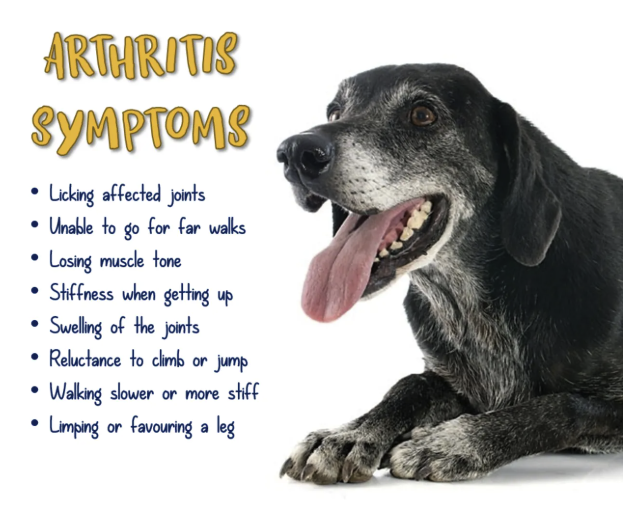What Every Pet Owner Needs to Know About Omega-3 Fatty Acids and Joint Health
Omega-3 fatty acid supplements for your dog (or cat)
What Every Pet Owner Needs to Know About Omega-3 Fatty Acids and Joint Health
As a pet owner, you aim to provide your furry companion with the best care possible—a safe home, nutritious meals, and plenty of exercise. But have you ever considered the vital role omega-3 fatty acids play in their joint health? These essential nutrients, found in fish oil, dietary supplements, and certain foods like salmon and sardines, could significantly improve your pet's quality of life.
In this article, we’ll explore how omega-3 fatty acids benefit joint health, address common concerns like is fish oil good for dogs, and provide practical tips to incorporate these powerful nutrients into your pet’s diet.
>> Shop Omega 3 Fatty Acids (For Dogs)
Top-Rated Omega-3 Fish Oils For Dogs (& Cats)
Understanding Omega-3 Fatty Acids
Omega-3 fatty acids are a type of polyunsaturated fat critical for your pet’s overall health. Because their bodies cannot produce these essential fatty acids naturally, they must obtain them through their diet. Omega-3s are best known for their anti-inflammatory properties, which make them particularly effective in managing conditions like osteoarthritis and inflammatory diseases in pets.
Key omega-3 components include:
Docosahexaenoic acid (DHA): Vital for brain development and cognitive function, especially in puppies. DHA is found in oily fish like salmon and mackerel, as well as in fish oil supplements.
Eicosapentaenoic acid (EPA): Plays a central role in reducing inflammation and improving cardiovascular health, making it a cornerstone of therapy for joint pain and chronic conditions.
Research shows that omega-3s can reduce the production of inflammatory prostaglandins, which are compounds linked to joint pain and stiffness. In one clinical trial, dogs receiving fish oil supplements experienced a 20% improvement in mobility compared to those on a standard diet.
The Role of Omega-3 in the Body
Omega-3 fatty acids contribute to numerous bodily functions, from supporting cell membrane integrity to enhancing the immune system. Their anti-inflammatory properties are especially important for pets suffering from osteoarthritis, as they help reduce joint pain, improve mobility, and even lower the need for pain medication.
Additionally, omega-3s are a boon for skin and coat health. Studies suggest that pets fed a diet rich in omega-3 fatty acids experience a 30% reduction in itch-related behavior caused by allergies or skin conditions. Beyond aesthetics, a well-maintained skin barrier also lowers the risk of infection.
Best Sources of Omega-3 Fatty Acids
Wild Alaskan Fish Oil (Skin & Coat)
Sources of Omega-3 Fatty Acids
You can add omega-3s to your pet’s diet in several ways:
Fish Oil for Dogs: A concentrated source of EPA and DHA, fish oil supplements are among the most popular options. When choosing a product, look for one specifically formulated for pets to avoid contamination with heavy metals like mercury.
Fatty Fish: Salmon, sardines, and anchovies are excellent sources of omega-3s. Cooked and deboned fish can be a delicious and nutritious treat for your pet.
Plant-Based Sources: For pets on vegetarian diets, flaxseed and chia seeds provide alpha-linolenic acid (ALA). While not as potent as EPA and DHA, ALA still offers notable benefits.
For optimal results, consult your veterinarian to determine the appropriate dose for your pet’s weight and health needs. A typical dose might range between 20–55 mg of combined EPA and DHA per pound of body weight.
By incorporating omega-3s into your pet's daily nutrition through fish oil or dietary supplements, you’re not just supporting joint health—you’re enhancing their overall vitality and quality of life.
>> Shop Omega 3 Fatty Acids (For Dogs)
The Importance of Joint Health in Pets
Joint health is a cornerstone of your pet's overall well-being, directly affecting their mobility, happiness, and quality of life. Like humans, pets can suffer from joint problems, and these issues often lead to chronic pain and reduced activity. Common conditions such as arthritis, hip dysplasia, and ligament injuries can greatly diminish your pet's ability to enjoy daily activities. Early intervention and proper care, including omega-3 dietary supplements like fish oil, can significantly improve joint health and overall vitality.
Common Joint Problems in Pets
Licking affected joints
Unable to go for far walks
Losing muscle tone
Stiffness when getting up
Swelling of the joints
Reluctance to climb or jump
Walking slower or more stiff
Limping or favoring a leg
Common Joint Problems in Pets
Arthritis: Arthritis is among the most prevalent joint problems in pets, affecting approximately 20% of dogs over one year old. This chronic condition causes inflammation and pain, leading to stiffness and reduced mobility. Inflammation is often linked to the production of compounds like prostaglandins, which omega-3 fatty acids can help suppress.
Hip Dysplasia: Hip dysplasia occurs when the hip joint doesn’t develop properly, leading to misalignment, pain, and eventual arthritis. Larger dog breeds like Labrador Retrievers and German Shepherds are particularly prone to this condition. Adding omega-3s to a puppy’s diet during growth stages can help reduce the risk of inflammation that contributes to hip dysplasia.
Ligament Injuries: Torn cruciate ligaments are a common injury, especially in active or overweight pets. These injuries often require surgery and long recovery periods, during which omega-3 supplements can aid in reducing inflammation and improving wound healing.
How Joint Health Affects Your Pet's Quality of Life
When joint health declines, your pet may:
Struggle with mobility, such as climbing stairs or jumping onto furniture.
Experience pain while walking, running, or standing.
Lose interest in activities they previously enjoyed, like playing fetch or going for walks.
Left untreated, joint problems can lead to secondary issues, including obesity due to inactivity and related chronic conditions like cardiovascular disease.
The Connection Between Omega-3 Fatty Acids and Joint Health
The benefits of omega-3 fatty acids, particularly EPA and DHA found in fish oil, are well-documented in scientific studies. These essential fatty acids act as natural anti-inflammatory agents by inhibiting eicosanoid production, which can reduce swelling and alleviate pain in affected joints.
One clinical trial demonstrated that dogs supplemented with fish oil showed a significant improvement in arthritis symptoms, including a 25% reduction in pain and a noticeable increase in activity levels. This makes omega-3s an effective tool for both treatment and prevention of joint problems.
Scientific Insights into Omega-3 and Joint Health
Pain Management: Omega-3s are known to improve pain scores in pets with osteoarthritis. Studies indicate that dogs receiving omega-3-enriched diets required fewer pain medications compared to those on standard diets.
Mobility Improvement: In a study published in the Journal of Veterinary Internal Medicine, dogs with arthritis experienced a 33% improvement in mobility when given fish oil supplements.
Long-Term Benefits: Regular use of omega-3 supplements not only alleviates symptoms but also slows the progression of degenerative joint diseases, preserving joint function for longer periods.
Shop the best joint supplements now
Buy Omega-3 Fatty Acid Supplements For Your Dog on Amazon
Omega-3 Supplements for Pets
When choosing an omega-3 supplement for your pet, it is important to look for one that is specifically formulated for animals. This ensures that the supplement contains the right balance and dosage of omega-3 fatty acids for your pet's needs. Consult your veterinarian to determine the best supplement for your furry friend.
Omega-3 Fatty Acids: A Smart Preventive Strategy for Your Pet’s Joint Health
Even if your dog isn’t showing signs of stiffness or pain, introducing omega-3s early can set them up for a lifetime of healthy movement. These essential fatty acids help protect cartilage, reduce inflammation, and slow the wear-and-tear that naturally comes with aging.
Preventive care matters most for large breeds and high-energy dogs, which are more prone to joint issues. Consistent omega-3 support can:
Delay osteoarthritis and joint degeneration
Lower injury risk caused by inflammation and ligament strain
Boost immune function, which aids in joint recovery from minor injuries
Adding omega-3s now is a small step that pays off in years of comfort, mobility, and active living.
How to Add Omega-3s to Your Dog’s Diet
Omega-3s are simple to incorporate — whether through supplements, whole foods, or enhanced pet foods. Here’s how to do it effectively:
1. Omega-3 Supplements for Dogs
Supplements are the most reliable way to deliver a consistent dose of EPA and DHA — the two most powerful omega-3s for joint health. Look for veterinary-formulated products free from mercury and heavy metals.
Common forms:
Liquid fish oil: Easy to mix with meals and highly absorbable
Capsules: Perfect for precise dosing or small dogs
Chews: Tasty and often paired with vitamin E for added antioxidant support
💡 Tip: Choose products with added vitamin E — it prevents fatty acid oxidation and keeps the supplement potent.
General dosage: 20–55 mg of combined EPA and DHA per pound of body weight. Always confirm the right dose with your veterinarian.
2. Omega-3-Rich Whole Foods
Prefer a more natural approach? Add these omega-3 powerhouses to your dog’s meals:
Salmon: Rich in EPA and DHA — serve cooked and boneless
Sardines: Affordable, easy to portion, and highly concentrated
Mackerel or herring: Great sources but best fed in moderation
Plant-based alternatives: Flaxseed or chia seeds provide ALA (a precursor to EPA/DHA), but they’re less potent. Use them to supplement, not replace, fish-based sources.
Commercial foods: Many premium dog foods now include salmon or algae oil. Look for formulas labeled omega-3 enriched.
Best Practices for Omega-3 Use
Start gradually: Introduce new foods or supplements slowly to avoid digestive upset.
Balance with vitamin E: Omega-3s can deplete it — many quality supplements include it already.
Track improvements: Watch for shinier coats, less itching, and smoother movement as signs it’s working.
When to Consult Your Veterinarian
Always talk to your vet before changing your dog’s diet or adding supplements. They’ll tailor dosing based on breed, weight, age, and existing conditions like arthritis, kidney disease, or obesity — and help you avoid over-supplementation, which can cause issues like GI upset or vitamin E deficiency.
Signs Your Dog Might Need More Omega-3
Watch for these red flags — they often point to inflammation or nutritional gaps that omega-3s can fix:
Limping or favoring a leg
Trouble standing, climbing, or jumping
Reluctance to play or exercise
Dry, flaky skin or dull coat
Chronic itching or excessive shedding
Slow healing or recurring infections
Work With Your Vet for Maximum Results
Your vet can guide you on:
The right omega-3 source and dose
How to pair omega-3s with other supplements like glucosamine
Balancing nutrients for optimal results
Monitoring progress and adjusting as needed
Why Choose Omega Benefits®
When it’s time to commit to better joint health, Omega Benefits® delivers more than standard fish oil. It’s a veterinary-grade, sustainable formula designed to fight inflammation, ease arthritis pain, and support long-term mobility — all while improving skin, coat, heart, and brain health.
What sets Omega Benefits® apart:
High levels of EPA and DHA for maximum anti-inflammatory support
Sourced for purity and sustainability, free from contaminants
Safe for daily, long-term use
Real-World Results
Bella, 9-year-old Golden Retriever: After 3 months on Omega Benefits®, her mobility improved by 40%, and she relied less on pain meds.
Max, 4-year-old Labrador: With hip dysplasia, Max regained his ability to climb stairs and play fetch thanks to reduced inflammation.
Bottom Line
Omega-3 fatty acids are one of the most effective, science-backed ways to prevent and manage joint problems in dogs. Whether you choose a supplement like Omega Benefits® or enrich their meals with omega-3-rich foods, the goal is the same: keep your dog active, comfortable, and thriving for years to come.
Consultation with Your Veterinarian: When & Why
It is essential to consult with your veterinarian before making any dietary changes or starting your pet on omega-3 supplements.
Your vet will be able to assess your pet's specific needs and provide you with expert guidance on the best course of action.







